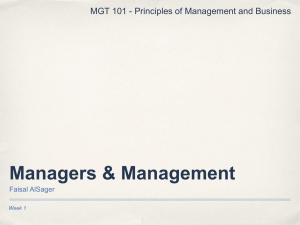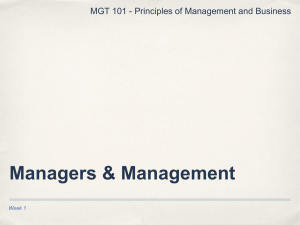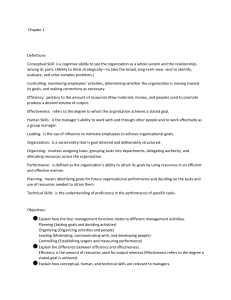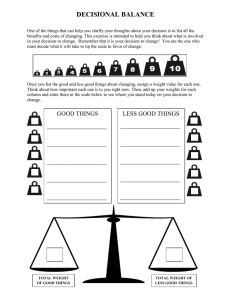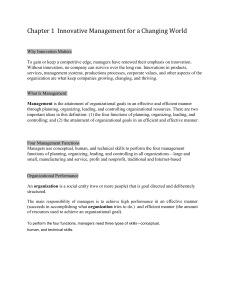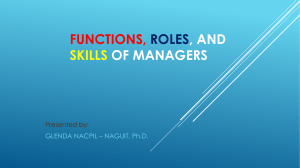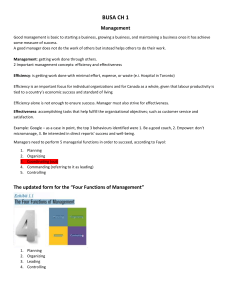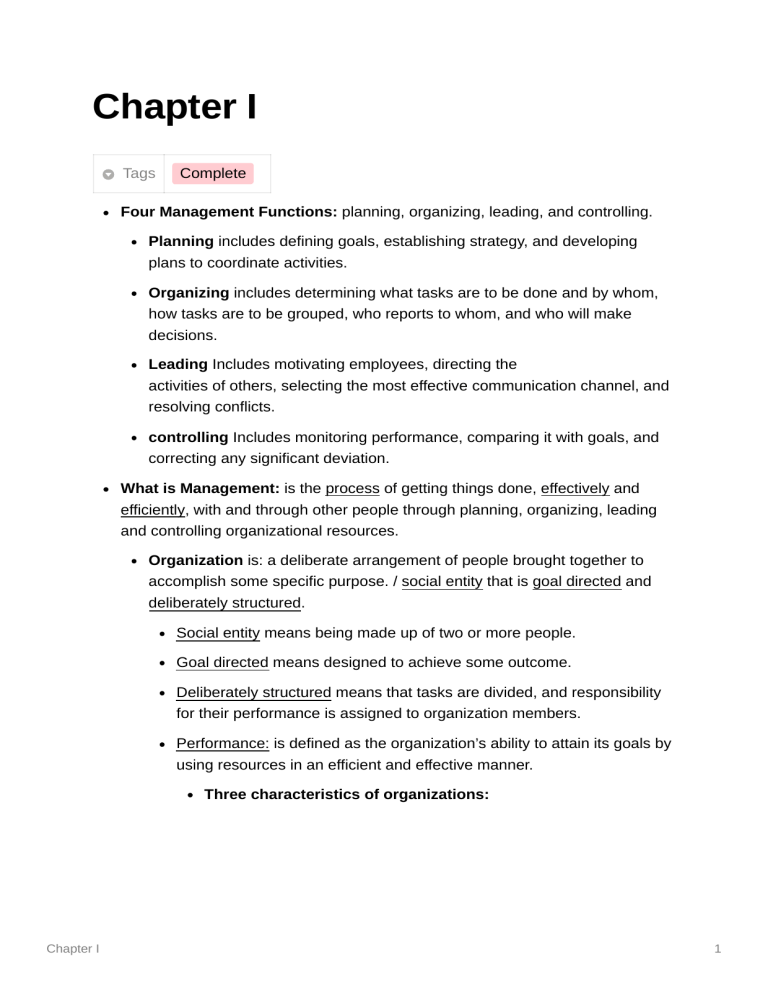
Chapter I Tags Complete Four Management Functions: planning, organizing, leading, and controlling. Planning includes defining goals, establishing strategy, and developing plans to coordinate activities. Organizing includes determining what tasks are to be done and by whom, how tasks are to be grouped, who reports to whom, and who will make decisions. Leading Includes motivating employees, directing the activities of others, selecting the most effective communication channel, and resolving conflicts. controlling Includes monitoring performance, comparing it with goals, and correcting any significant deviation. What is Management: is the process of getting things done, effectively and efficiently, with and through other people through planning, organizing, leading and controlling organizational resources. Organization is: a deliberate arrangement of people brought together to accomplish some specific purpose. / social entity that is goal directed and deliberately structured. Social entity means being made up of two or more people. Goal directed means designed to achieve some outcome. Deliberately structured means that tasks are divided, and responsibility for their performance is assigned to organization members. Performance: is defined as the organization’s ability to attain its goals by using resources in an efficient and effective manner. Three characteristics of organizations: Chapter I 1 A process refers to a set of ongoing and interrelated activities. Efficiency means doing a task correctly and getting the most output from the least amount of inputs. Managers are concerned with the efficient use of the resources such as money, people and equipment. Effectiveness means “doing the right things” by doing those work tasks that help the organization reach its goals. Management Skills: Chapter I 2 Conceptual skill is the cognitive ability to see the organization as a whole system and the relation-ships among its parts. It means the ability to think strategically – to take the broad, long-term view – and to identify, evaluate and solve complex problems. Human skill is the manager’s ability to work with and through other people and to work effectively as a group member. the ability to motivate, facilitate, coordinate, lead, communicate and resolve conflicts. Technical skill is the understanding of and proficiency in the performance of specific tasks. Technical skill includes mastery of the methods, techniques and equipment involved in specific functions such as engineering, manufacturing or finance. includes specialized knowledge, analytical ability and the competent use of tools and techniques to solve problems in that specific discipline. Failure of skills: Due to poor human skills, such as the inability to develop good work relationships. ineffective communication skills and practices, cited by 81 per cent of managers surveyed. A manager’s weaknesses become more apparent during stressful times of uncertainty, change or crisis. Chapter I 3 Types of management: Vertical Differences: Top Managers responsible for making decisions about the direction of the organization . Titled: vice president, president, chancellor, managing director, chief operating officer, chief executive officer, or chairperson of the board. Middle Managers: Individuals who are typically responsible for translating goals set by top managers into specific details and are responsible for business units and major departments. Titled: agency head, project leader, unit chief, district manager, division manager, or store manager. Project manager is responsible for a temporary work project that involves the participation of people from various functions and levels of the organization, and perhaps from outside the company as well. First line managers: Supervisors responsible for directing the day-today activities of non-managerial employees and directly responsible for the These roles are divided into three conceptual categories: informational (managing by information), interpersonal (managing through people) and decisional (managing through action).production of goods and services. Titled: supervisors, team leaders, coaches, shift managers, or unit coordinators Horizontal Differences: A functional manager is responsible for a department that performs a single functional task, such as finance or marketing. General managers are responsible for several departments that perform different functions, such as the manager of a Macy’s department store or a Ford automobile factory. Management Roles: Mintzberg concluded that managers perform 10 different roles. These roles are divided into three conceptual categories: informational (managing by information), interpersonal (managing through people) and decisional (managing through action). The informational roles involve collecting, receiving, and disseminating information. Chapter I 4 The three information roles include monitor, disseminator, and spokesperson. The interpersonal roles are ones that involve people (subordinates and persons outside the organization). The three interpersonal roles are figurehead, leader, and liaison. The decisional roles entail making decisions or choices. The four decisional roles are entrepreneur, disturbance handler, resource allocator, and negotiator. Small businesses and Non Profit Organizations: Small businesses Small businesses are growing in importance. Chapter I 5 Managers in small companies see their most important role as that of spokesperson. They must promote the small, growing company to the outside world. The entrepreneur role is also critical in small businesses. Non Profit Organizations: The primary difference is that managers in businesses direct their activities towards earning money for the company, whereas managers in non-profits direct their efforts towards generating social impacts. In businesses, managers focus on improving the organization’s products and services to increase sales revenues. In non-profits, however, services are typically provided to non-paying clients, and a major problem for many organizations is securing a steady stream of funds to continue operating. Managers must focus on keeping organizational costs as low as possible. Personal Challenges: Time management. The increased workload The challenge of supervising former peers The headache of responsibility for other people Being caught in the middle Aventures in multitasking Activity characterized by variety fragmentation and brevity Less than nine minutes on most activities Managers shift gears quickly Life on speed dial Work at unrelenting pace Interrupted by disturbances Always working (catching up) Innovative Management for tomorrow's business: Chapter I 6 Rapid environmental shifts: Technology Globalization Shifting social values In the new workplace, work is free-flowing, complex and flexible: Success depends on innovation and continuous improvement. Future management competencies: Greater collaboration across functions, levels, customers, and companies. Riskier experimentation and learning are key values. Knowledge management and information sharing. Case Study: Summary, Is it an issue or problem, Analysis, Solution. Chapter I 7
